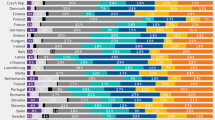Abstract
Objective
To develop an effective Chinese Medicine (CM) diagnostic model of coronary heart disease (CHD) and to confifirm the scientifific validity of CM theoretical basis from an algorithmic viewpoint.
Methods
Four types of objective diagnostic data were collected from 835 CHD patients by using a self-developed CM inquiry scale for the diagnosis of heart problems, a tongue diagnosis instrument, a ZBOX-I pulse digital collection instrument, and the sound of an attending acquisition system. These diagnostic data was analyzed and a CM diagnostic model was established using a multi-label learning algorithm (REAL).
Results
REAL was employed to establish a Xin (Heart) qi defificiency, Xin yang defificiency, Xin yin defificiency, blood stasis, and phlegm fifive-card CM diagnostic model, which had recognition rates of 80.32%, 89.77%, 84.93%, 85.37%, and 69.90%, respectively.
Conclusions
The multi-label learning method established using four diagnostic models based on mutual information feature selection yielded good recognition results. The characteristic model parameters were selected by maximizing the mutual information for each card type. The four diagnostic methods used to obtain information in CM, i.e., observation, auscultation and olfaction, inquiry, and pulse diagnosis, can be characterized by these parameters, which is consistent with CM theory.
Similar content being viewed by others
References
Maglogiannis I, Loukis E, Zafiropoulos E, Stasis A. Support vectors machine-based identification of heart valve diseases using heart sounds. Comput Methods Programs Biomed 2009;95:47–61.
Mou X, Zhou DY, Liu WH. Study on the relationship between Chinese medicine constitutive susceptibility and diversity of syndrome in diabetic nephropathy. Chin J Integr Med 2013;19:656–662.
Yang XB, Liang ZH, Zhang G. A classification algorithm for TCM syndromes based on P-SVM. Proceedings of the Fourth International Conference Machine Learning Cybernetics, Bonn, Germany; 2005:3692–3697.
Zhang T, Zhu Wk, Xu ZL, Zhang LT. Support vector machine and Iits application in Zang-Fu organ differentiation. CD Technol 2007;4:42.
Report of the Joint International Society and Federation of Cardiology/World Health Organization task force on standardization of clinical nomenclature. Nomenclature and criteria for diagnosis of ischemic heart disease. Circulation 1979;59:607–609.
China Society of Integrated Traditional Chinese and Western Medicine. Criteria from standards for differentiation diagnosis of chest pain, chest disease, palptation, short breath or debilitation for coronary heart disease in Chinese medicine. In Annual Conference of Chinese Integrative Medicine Professional Committee of Cardiovascular Research, Qingdao, China;1990:216–223.
Zheng XY, ed. Guiding principle of clinical research on new drugs of traditional Chinese medicine. Beijing: China Medical Science Press; 1993:9194.
Wang YQ, ed. Textbook of traditional Chinese medicine diagnostics (seven-year-version). Beijing: Higher Education Press; 2006:400–446.
Jose M, Filiberto P. Supervised feature selection by clustering using conditional mutual information-based distances. Pattern Recognition 2010;43:2068–2081.
Yang H, Moody J. Data visualization and feature selection: new algorithms for non-gaussian data. Adv Neural Inform Process Syst 1999:12.
Vidal-Naquet M, Ullman S. Object recognition with informative features and linear classification. IEEE Conference on Computer Vision and Pattern Recognition, Madison, USA; 2003:39–45.
Fleuret F. Fast binary feature selection with conditional mutual information. J Machine Learning Res 2004;5:1531–1555.
Peng H, Long F, Ding C. Feature selection based on mutual Information: criteria of max-dependency, max-relevance, and min-redundancy. IEEE Trans Pattern Anal Mach Intell 2005;27:1226–1238.
Lin D, Tang X. Conditional infomax learning: an integrated framework for feature extraction and fusion. In European Conference on Computer Vision, Graz, Austria; 2006:748–763.
Author information
Authors and Affiliations
Corresponding author
Additional information
Supported by the National Natural Science Foundation of China (No. 81173199), Shanghai Sailing Program (No.15YF1412100), Young Teachers’ Training Funded Project in Shanghai University (No. ZZszy13003) and Budget for Research Shanghai Municipal Education Commission (No. 2013JW06), Chin
Rights and permissions
About this article
Cite this article
Xu, J., Xu, Zx., Lu, P. et al. Classifying syndromes in Chinese medicine using multi-label learning algorithm with relevant features for each label. Chin. J. Integr. Med. 22, 867–871 (2016). https://doi.org/10.1007/s11655-016-2264-0
Received:
Published:
Issue Date:
DOI: https://doi.org/10.1007/s11655-016-2264-0




